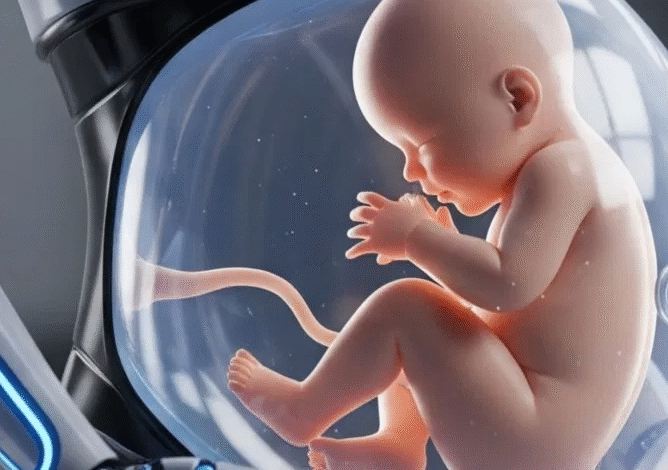China creates a robot that gestates with an artificial womb
China has developed the first artificial womb in the form of a gestation robot, an advance that raises medical hopes but also raises significant ethical debate.

Photo via: X
China is working on the first humanoid robot with an artificial womb, capable of carrying a fetus from conception to birth without the need for a human body. The initiative, led by Kaiwa Technology and Dr. Zhang Qifeng, was presented at the World Robot Conference 2025 in Beijing, with a prototype planned for 2026.
How the robot works
The device simulates the human uterine environment with synthetic amniotic fluid and a nutrition system that mimics the function of the umbilical cord. It can maintain pregnancy for about 10 months and is expected to cost less than 100,000 yuan (about $14,000 USD).
China is facing a growing demographic crisis, with a low birth rate and an aging population, which is driving the search for solutions like this technology. Furthermore, artificial gestation could offer a legal alternative to surrogacy, which is banned in the country.
Ethical and legal dilemmas
The announcement has sparked intense global debate. Among the concerns are:
- The robot's ability to replicate complex processes such as hormones, immune defenses, and neurological development.
- The emotional impact on the mother-child bond.
- The legal loophole regarding a creature born outside the human womb.
- The risks of commercializing biotechnological reproduction and manipulation.
Discussions have begun with authorities in Guangdong to explore an appropriate regulatory framework.
Previous scientific context
The idea of an artificial womb is not new. Back in 2017, researchers at the Children's Hospital of Philadelphia successfully gestated lamb fetuses in a "biobag," an extracorporeal system containing artificial amniotic fluid. This scientific track record supports some of the progress, although the leap to full gestation in humanoids represents a significantly greater technical challenge.
For more stories like this, follow More Latin.
Sources:
